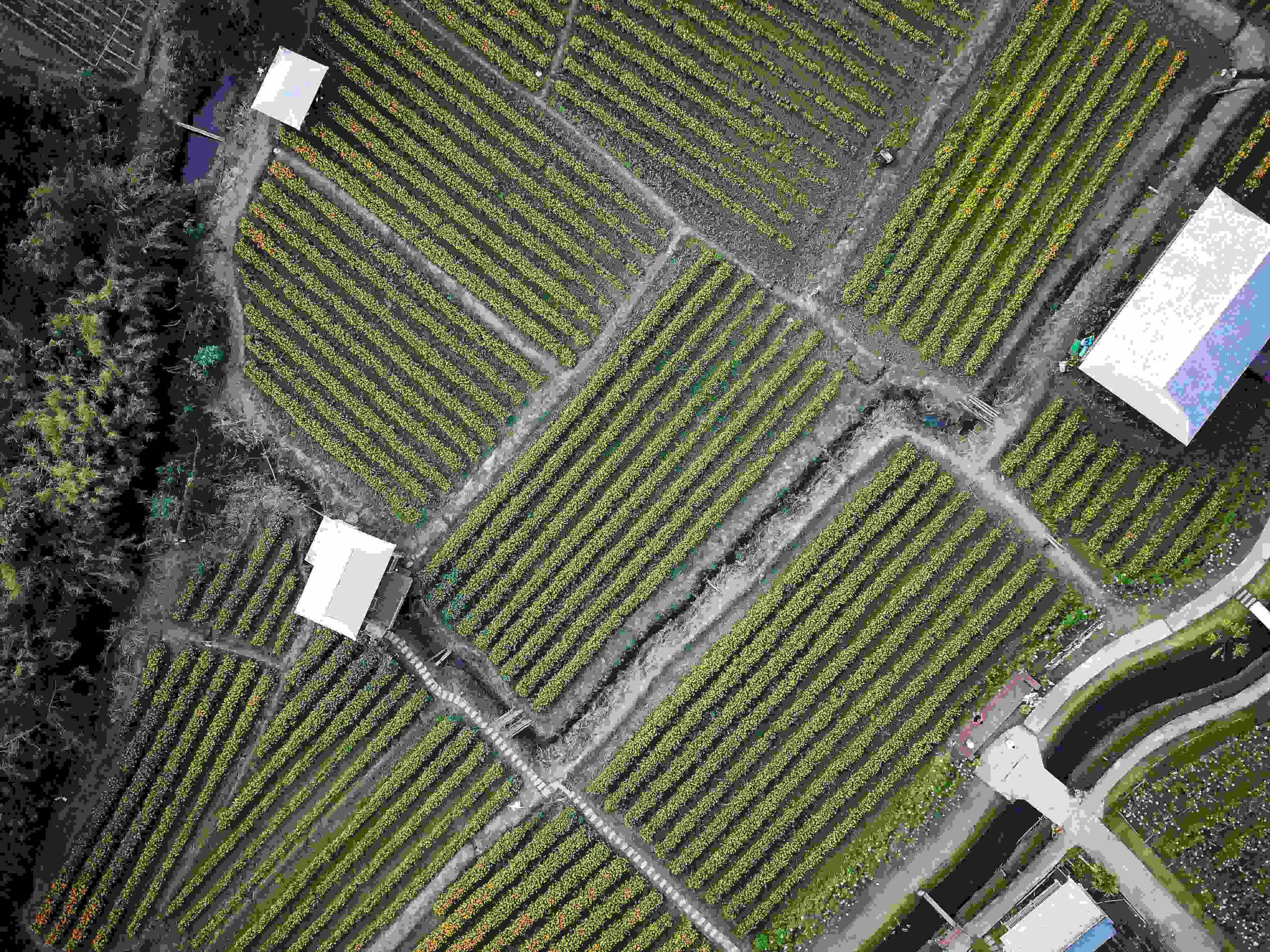How Vertical Farming is Changing Agribusiness?
04 April 2024
5 Mins Read

toc impalement
The agricultural landscape is undergoing a significant transformation as it embraces the future of farming—vertical farming. This innovative approach not only promises to revolutionize how we grow our food but also stands at the forefront of efforts to apply sustainable agriculture solutions.
By taking agriculture off the horizontal plane and expanding it into the vertical, vertical farming is redefining the parameters of agribusiness, offering a sustainable, efficient, and technologically driven pathway to food production.
The Rise of Vertical Farming

This method of farming is typically implemented in controlled environment agriculture (CEA) settings, which optimize growing conditions to maximize yield and minimize waste.
The rise of vertical farming is fueled by the growing need to feed a burgeoning global population, expected to reach 9.7 billion by 2050, according to the United Nations.
Coupled with decreasing arable land, the pressures of climate change, and the increasing urbanization of populations, vertical farming presents a viable solution to many of the challenges facing traditional agriculture.
Importance Of Vertical Farming You Must Know

There are several importance of vertical farming that you should know at your end. You should not make your selection and choices on the incorrect end. Try to make your selection and choices in perfect order.
1. Sustainability And Efficiency
One of the most compelling aspects of vertical farming is its potential for sustainability and efficiency. By controlling environmental factors such as light, humidity, and water, vertical farms can produce crops all year round. Additionally, they are not affected by weather situations.
This not only increases productivity but also significantly reduces water usage compared to conventional farming methods. Moreover, since vertical farms can be established near or within urban areas, they diminish the need for transportation, cutting down on carbon emissions and ensuring fresher produce reaches consumers faster.
2. Technological Innovations
The heart of vertical farming lies in its use of cutting-edge technology. From LED lighting that mimics sunlight to sophisticated climate control systems, technology is what enables these farms to operate so efficiently.
Automation plays a crucial role, with robots often handling planting, monitoring, and harvesting. This high degree of automation not only reduces labour costs but also minimizes human error, ensuring consistent crop quality and yield.
Artificial Intelligence (AI) and machine learning are increasingly being incorporated to analyze data and optimize growing conditions, further enhancing efficiency and productivity. These technologies can predict plant growth patterns, detect diseases early, and even tailor nutrition to specific crop needs, showcasing the dynamic potential of vertical farming in pushing the boundaries of what’s possible in agriculture.
3. Economic Viability And Challenges
The question of economic viability is central to the discussion on vertical farming. Initially, the high startup and operational costs posed significant barriers to entry. However, as technology advances and becomes more affordable, and as vertical farming operations scale up, these costs are beginning to decrease.
Despite these advancements, challenges remain. Energy consumption, particularly for lighting and climate control, is a major operational cost that can impact profitability.
Additionally, the current focus on high-value, leafy green vegetables limits the range of crops that can be economically grown in vertical farms, though research is underway to expand this range to include staple crops such as wheat and rice.
4. Increased Food Production
Vertical firms can grow more food significantly with a smaller footprint. Thus, it can save you space and expenses when purchasing a larger portion of the land. This is the reason why they stack, growing all the layers vertically.
More importantly, you can focus solely on space utilization. You need to be well aware of the facts while reaching your goals with absolute ease. Ensure that you do not make your selection and choices on the incorrect end.
It can be built in urban areas, and it can be repurposed into buildings that bring fresh produce much closer to the customers. You should identify the facts while reaching your objectives with ease.
5. Resource Conservation
Compared to traditional methods, vertical farms use significantly less water. You should not make your choices on the incorrect end. Most of the time, they make use of Hydroponics or aeroponics. Along with this, vertical farming can reduce the problems of resource conservation to a considerable extent.
Most of the time, they reduce the need for herbicides and pesticides due to the presence of a controlled environment. You need to be well aware of proper solutions that can boost your farming methods to a considerable extent.
6. Year Round Production
Vertical firms have the power to create a controlled environment to enhance the process of irrigation. These are not similar to traditional firms. Most traditional firms rely on seasons and weather.
Artificial lighting and climate control are the two important factors for year-round production. You should be well aware of it while reaching your requirements with complete ease. Ensure that you follow the right process from your end.
7. Reduced Food Waste
Since all the vertical firms are located close to consumers, food can travel in shorter distances. Thus, it minimizes spoilage and transportation costs. You must not make your selection on the incorrect end.
Farmers can travel shorter distances by minimizing food waste. Try to make sure that you do not make things too complex from your end while meeting your needs with ease. Without knowing the situation, you cannot make your selection and choices on the incorrect end.
8. Climate Resilience
Extreme climate changes and weather events can be a potential threat to traditional farming. Most of the time, vertical farming is susceptible to all these factors due to a controlled environment.
You need to be well aware of the reality while reaching your goals with complete ease. Keep the process in perfect parity while you want to reach your objectives with complete ease. Although most of us are not aware of these situations.
The Future Of Agribusiness

The implications of vertical farming for the future of agribusiness are profound. As urban populations continue to grow, the ability to produce food in urban centres could significantly alter food supply chains, reduce food miles, and enhance food security.
Moreover, the environmental benefits, such as reduced water usage, lower pesticide use, and decreased land degradation, align with the global shift towards more sustainable food production practices.
Innovation in vertical farming is not slowing down, with new technologies and practices continually emerging. As these innovations become more mainstream, the cost barriers are expected to decrease, making vertical farming an increasingly attractive investment for entrepreneurs and agribusinesses alike.
Conclusion
Vertical farming is more than just an innovative agricultural method; it’s a transformative force in agribusiness, heralding a future where food production is more sustainable, efficient, and closely aligned with the needs of a rapidly changing world.
As it continues to evolve, vertical farming not only offers a solution to the pressing challenges facing traditional agriculture but also opens up new avenues for growth, innovation, and sustainability in agribusiness. Keep the process in the correct order while reaching your goals. Without knowing the process things can become more complex for you in the long run.
The path forward is clear: embracing vertical farming is not just about adopting new technologies but about reimagining the future of food production in harmony with the planet.
Read More:


















Comments Are Closed For This Article